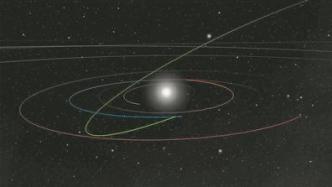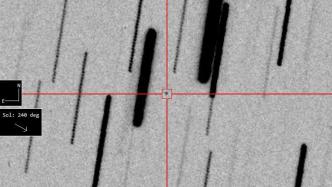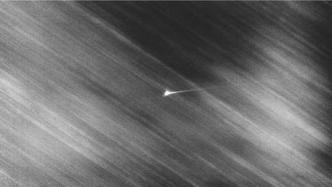

2022 SF289 (green) closest to Earth's orbit (blue). Image credit: University of Washington
A new study from the University of Washington in the US represents a major advance in asteroid detection. An algorithm called HelioLinc3D developed by the university's research team has detected a potentially threatening asteroid for the first time.
HelioLinc3D discovered near-Earth asteroids using the Vera C. Rubin Observatory's 10-year night sky survey project. During testing of the Asteroid Terrestrial Impact Sustained Alert System (ATLAS) in Hawaii, the algorithm discovered an asteroid, dubbed 2022 SF289.
The asteroid, while considered potentially threatening, does not pose any risk to Earth in the foreseeable future. The discovery is an important milestone as it validates that HelioLinc3D's next-generation algorithm can detect near-Earth asteroids with fewer and more dispersed observations than today's methods require.
To keep up with the Vera C. Rubin Observatory's observing "cadence," researchers developed a new algorithm to more reliably spot rocky objects. On July 18 of this year, the algorithm pinpointed its first target: 2022 SF289. Although ATLAS imaged the asteroid as early as September 19, 2022, at a distance of about 21 million kilometers, traditional methods still failed to detect it.
This, the researchers say, is a preview of the coming era of data-intensive astronomy. From HelioLinc3D to AI-assisted code, the next 10 years' discovery stories will be told by algorithms and new large telescopes.


